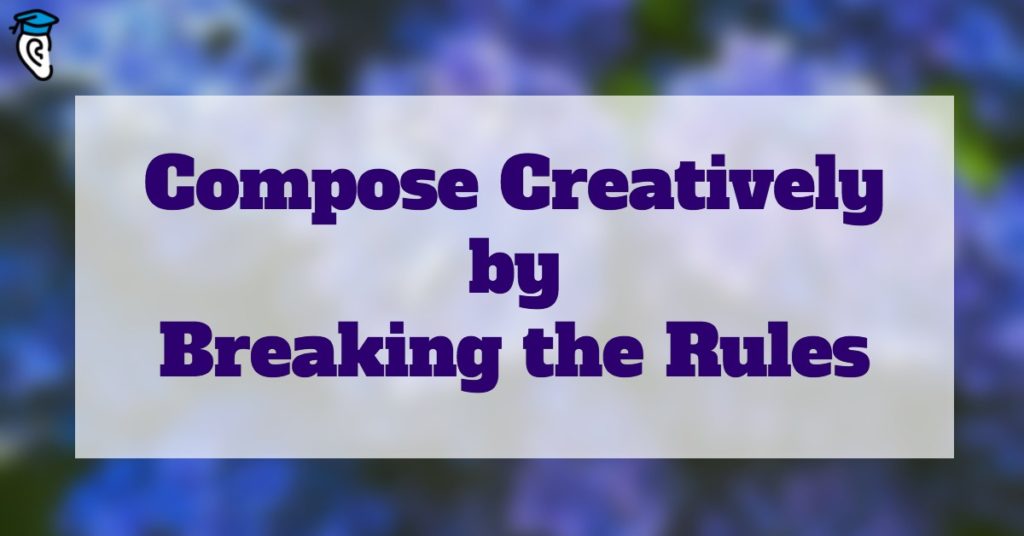Composing music in a classical style can put restrictions on your creativity, especially if you are looking to create your own sound. Thankfully, in the age of technology, there are many ways to create new sounds – and even new instruments!
We recently reached out to composer Adam Scott Neal, who has experimented with a wide variety of sounds and methods of composing, for his advice on composing creatively and the world of abstract music.
Here’s what we learned.
This is a summary post.
→ Read the full interview
First you have to know what you like
If you want to take a new approach to composing, it’s important to first know what you like and value. Adam suggests to listen more, read more and experiment more.
Maybe you will find something you never previously heard speak to your aesthetic. Are you fascinated by rhythms? Have you ever actively listened to complex polyrhythms, off-kilter meters, hypnotic pulsation? Maybe harmony is your thing. Have you ever experimented new and unpredictable harmonies or recognizable chords with non-traditional juxtapositions?
Some places to find out what you like are sites like YouTube’s “Up Next” feature and Incipitsify where the video follows the score. If you know what is possible in music, then you can learn to include – and exclude – what does or does not interest you.
Developing an ear for experimental music
So perhaps with some examination, you’ve found that experimental music is interesting, but don’t yet have an ear for it. There are ways to develop it.
Abstract music is detail-oriented, so for starters, it’s important to listen for details in music. It also helps to have a guide and know for what you ought to be listening.
For example, everyone knows that Beethoven’s 5th Symphony has clear motifs that are recognizable once you know that they are there. The same is true of abstract music.
Start by listening to rock bands such as Queen, The Beatles and Pink Floyd, as they all were early examples of experimental music and then work your way to abstract music.
Breaking the rules (and other objects)
Look no further than right under your nose for inspiration if you would like to get into abstract composition. Consider composing for certain objects that appeal to you or even find new uses for traditional instruments or household objects.
Adam has hacked electronic toys such as Texas Instruments’ Speak & Spell toy to create new sounds. This is popular with a community of people who are called “circuit benders”. They take electronic toys and deliberately short-circuit them to create new sounds.
In the realm of computerized music, some people even create alternate controllers to create music from movement. For more ideas on how to innovatively compose music, The New Interfaces for Musical Expression conference is a place where you can find a host of new musical ideas.
Creating new sounds
Adam is drawn to objects for their unique sonic characteristics, which plays a big part in his composition process. In Adam’s dissertation, he mentioned that he creates music by “buying, building and breaking”:

- Buying: Purchase certain objects that speak to you, whether by their association to your childhood memories, because you are a Sci-Fi fan or for some other reason close to you. Adam has used objects like toy pianos and theremins, which are instruments controlled without contact.
- Building: Isn’t it fun to build stuff? Why not build your own instrument out of some material that you like and see if you can get an interesting sound out of it? That is something that Mark Applebaum and Harry Paartch do which inspires Adam.
- Breaking: Adam has “hacked” toys to create new sounds. Another way to create new sounds is to take a traditional instrument and alter it. For example, Adam works with a “prepared piano”, that is, a piano with screws, erasers and other objects set between the strings which makes for interesting percussive sounds.
Performing with computers
A great deal of what is created in experimental music today stems from the use of electronics and computers. How important is it to understand computers and technology to compose music?
Although not necessary, it can be helpful. The latest fads can yield some interesting results, as did the fad of “laptop orchestras” on Adam’s experimentation with networks signals.
Adam went through some interesting ear training in which he learned to understand frequency bands. It helped him to not only produce recordings but to think about orchestration in general because it taught him how to put frequencies into a larger whole.
Probably the biggest advantage to having an understanding of computers is the business side of the industry, where it is very important to maintain a web presence, know how to distribute your music and use programs to compose and create.
Some things never go out of style!
In spite of the seemingly endless ways of creating new music, there are certain musical components that never go out of style. For instance, Adam studied traditional ear training methods in addition to his music technology classes.
Elements of music that are non-limiting such as static and relative harmony, interesting tempo changes and dynamics are still great composition tools, even in abstract music. One never tires of hearing wind, string and percussive instruments in music and texture, timbre and tone are always important in good composition.
Finally, there will always be a place for good old fashioned hand-writing of scores with pen and paper, as Adam writes all his drafts this way.
If you want to find new ways of creative composing, first figure out what you like by listening, reading and experimenting, develop and ear for new styles and don’t be afraid to buy, build and break things! As Adam Scott Neal revealed, you just may find a new creative outlet and your signature sound.







